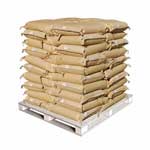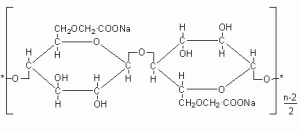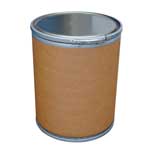
Polyanionic Cellulose (PAC)
Introduction:
Polyanionic cellulose, abbreviated as PAC. It is a water-soluble polymer derived from cellulose. However, it would be more accurate to say polyanionic cellulose is a water-soluble cellulose ether chemically modified from natural cellulose.
The appearance of polyanionic cellulose is white and light yellow powder or particle. It is odorless, non-toxic, and strong moisture absorption. Polyanionic cellulose polymer is easily soluble in cold water and hot water. In addition, it has excellent thermal stability, salt resistance, and strong antibacterial activity.
CAS No.:
9004-32-4
Chemical Formula:
[C6H7O2(OH)2CH2COONa]n
Structure:
Properties:
Polyanionic cellulose is similar to carboxymethyl cellulose (CMC chemical) in structure, properties, and uses. The difference is that PAC polymer is a quality product with a higher substitution degree of carboxymethyl. Therefore, it contains less residual NaCl than industrial-grade carboxymethyl cellulose.
Polyanionic cellulose polymer is also a good drilling mud additive. Its low viscosity and high viscosity characteristics make the quality of drilling fluid higher. Polyanionic cellulose is also an important material for the preparation of drilling fluids. Therefore, polyanionic cellulose is widely used in oil drilling, especially in salt wells and offshore drilling.
Polyanionic cellulose (PAC) is a good filtrate reducer. As a result, it can increase the viscosity and high-temperature resistance (150°C) of fully concentrated liquids such as freshwater, seawater, and even saturated brine. As a result, the slurry or fluid prepared from it can better reduce fluid loss. And it has a stronger repelling ability and higher heat resistance.
At the same time, polyanionic cellulose is a good fluid filtration-reducing agent. HV PAC forms a thin and strong mud film in the drilling wall together with clay. This can protect the drilling. High-viscosity polyanionic cellulose can increase the viscosity of drilling fluid and suspend drilling cuttings and particles. In addition to reducing filtration losses, polyanionic cellulose can be used as a viscosifier, rheology control agent, binder, stabilizer, colloidal protectant, and suspending agent.
Specifications:
| Test Item | Standard | ||
|---|---|---|---|
| PAC-LV | PAC-HV | ||
| Appearance | Freely flowable powder | ||
| pH value | 6.0-8.0 | 6.0-8.0 | |
| Purity, % | 95 Min. | 95 Min. | |
| Moisture, % | 10 Max. | 10 Max. | |
| D.S. | 0.90 Min. | 0.90 Min. | |
| Viscosity Brookfield 1% | 50 Max. | 1500 Min. | |
| API Fluid Lose | Increase 0.57% | 25.0ml Max. | 20.0ml Max. |
| Increase 0.86% | 15.0ml Max. | 15.0ml Max. | |
| Increase 1.14% | 10.0ml Max. | 10.0ml Max. | |
| YP Value | Increase 0.57% | 0.5 Max. | 2.4 Min. |
| Increase 0.86% | 1.0 Max. | 9.6 Min. | |
| Increase 1.14% | 1.5 Max. | 19.2 Min. | |
Uses:
PAC-HV is for water-based drilling fluids, which can effectively reduce the filtration rate of many water-based oil and gas drilling fluids and may also be used to increase and stabilize viscosity to improve hole cleaning and suspension properties in a wide variety of fluid environments.
PAC-LV is used in solids-laden, water-based drilling fluids, which can effectively reduce the filtration rate of many water-based drilling fluids without causing significant increases in viscosity or gel strength.
PAC-R is a cost-effective additive to reduce the API filtration rate of many water-based drilling fluids including fresh water, seawater, saturated saltwater, and solids-free brines, native mud, flocculated mud, inhibited mud, and contaminated systems.
PAC-R increases and stabilizes viscosity to improve rheology, wellhole cleaning, and suspension property by coating and encapsulating cuttings and solids of drilling fluids.
PAC-R is effective over a wide range of pH environments. It lubricates solids in the system, improves wall cake characteristics, and reduces the potential for the stuck pipe.
Packing and Storage:
Packed in multiply paper bags or fiber drums (25k), or as per customers’ requirements.

Polyanionic cellulose (PAC) must be stored and sealed in a dry and ventilated place to prevent it from rain, high temperature, and strong sunlight. The shelf life of the solid product is 12 months.
Synonyms:
Polyanionic Cellulose, PAC, Polyanionic Cellulose polymer, PAC polymer, Poly Anionic Cellulose.








